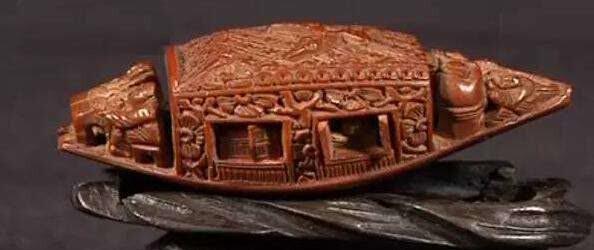"Meishan is not aware of decay, and the valley water is different. The car clothes are named after the watch, and the cultural relics are placed according to the time. —— Li Shimin's "Yong Sima Biao's Continuation of the Han Zhi"

In the splendid history of our country for thousands of years, generation after generation of ancestors have created many glorious civilizations. Although ancient civilizations have now passed away from us with time, countless rare treasures from ancient times to today are telling the glory of our ancestors.
After entering the modern society, in order to better and better protect these cultural relics, museums have been built on the land of our country. Each of us ordinary people finally has the opportunity to see the precious treasures left by these ancestors up close.
In the Nanjing Museum there is such a magical treasure, called the Hibiscus Stone Cockroach Ear Cover Furnace. The hibiscus stone cockroach ear cover furnace presents a rather "girly" pink color throughout, and the entire equipment is covered with natural patterns unique to high-grade hibiscus stone. The cover was polished by a skillful craftsman, chiseling out four ornaments that resembled the circling of a dragon, and the belly of the furnace also had a pile of symmetrical cockroach ears.
Hibiscus itself is very fragile, and you must be very careful when carving, and if you are not careful, you will waste a whole precious stone. Like the Nanjing Museum's collection of such a large hibiscus stone cockroach ear cover furnace in China, it is the only one in China, which is a must-see treasure of the town hall for every visitor to visit the museum, and its existence represents the peak of the carving craftsman's technology during the Qianlong period of the Qing Dynasty.
If the Hibiscus Stone Cockroach Ear Cover Furnace represents the level of craftsmanship during the Qianlong period of the Qing Dynasty, then another treasure of the Nanjing Museum, the Golden Cicada Jade Leaf, is the signature work of the Ming Dynasty craftsmen. The golden cicada jade leaves are composed of two parts, the golden cicada and the jade leaf, and the gold content of the golden cicada is as high as 95%, which fully proves the development of metallurgical technology in the Ming Dynasty.
Thanks to the exquisite craftsmanship of the craftsmen, the whole golden cicada looks like a real cicada sound in the next second. The jade leaves use the mutton fat white jade from Hetian, Xinjiang, which is crystal clear in color and elegant like gelatin throughout. According to the direction of natural jade, the craftsmen have refined it into a jade leaf in the shape of a leaf, and each main vein and branch vein are carved just right, as if it is natural.
Let's turn the clock back to the Yuan Dynasty, and after the Nanjing Museum has won the double kill, this time we will shift our eyes to the Gansu Provincial Museum and take a look at the Yuan Dynasty glass lotus pendants treasured here.
This Yuan Dynasty glass lotus pendant was excavated from the cemetery of a large family in Dingxi City, and it was not an instrument used by the imperial family at that time, so it better represented the true level of folk craftsmen in the Yuan Dynasty. The whole glass lotus tray presents a very enchanting blue, and with its blooming lotus shape, it is unforgettable after a glance at it.
Blue gives people a bright, gorgeous feeling, and the lotus flower reminds people of the image of purity and holiness, and this artistic style of harmony and brightness is vividly reflected in the glass lotus lamp. Although its manufacturing process may not be as delicate and exquisite as the royal artifacts of the Qing and Ming dynasties, it is better than the unique aesthetic style. It truly represents the popular aesthetic standards of the people at that time and the technical standards of ordinary craftsmen.
Each kind of cultural relics shows the degree of civilization development of that era, the level of social productivity and the preferences of the common people from different angles. The representative cultural relics of the above three different dynasties represent the artistic styles of the three different eras of the Qing, Ming and Yuan dynasties, and do you admire the aesthetic vision of the ancients after reading it?